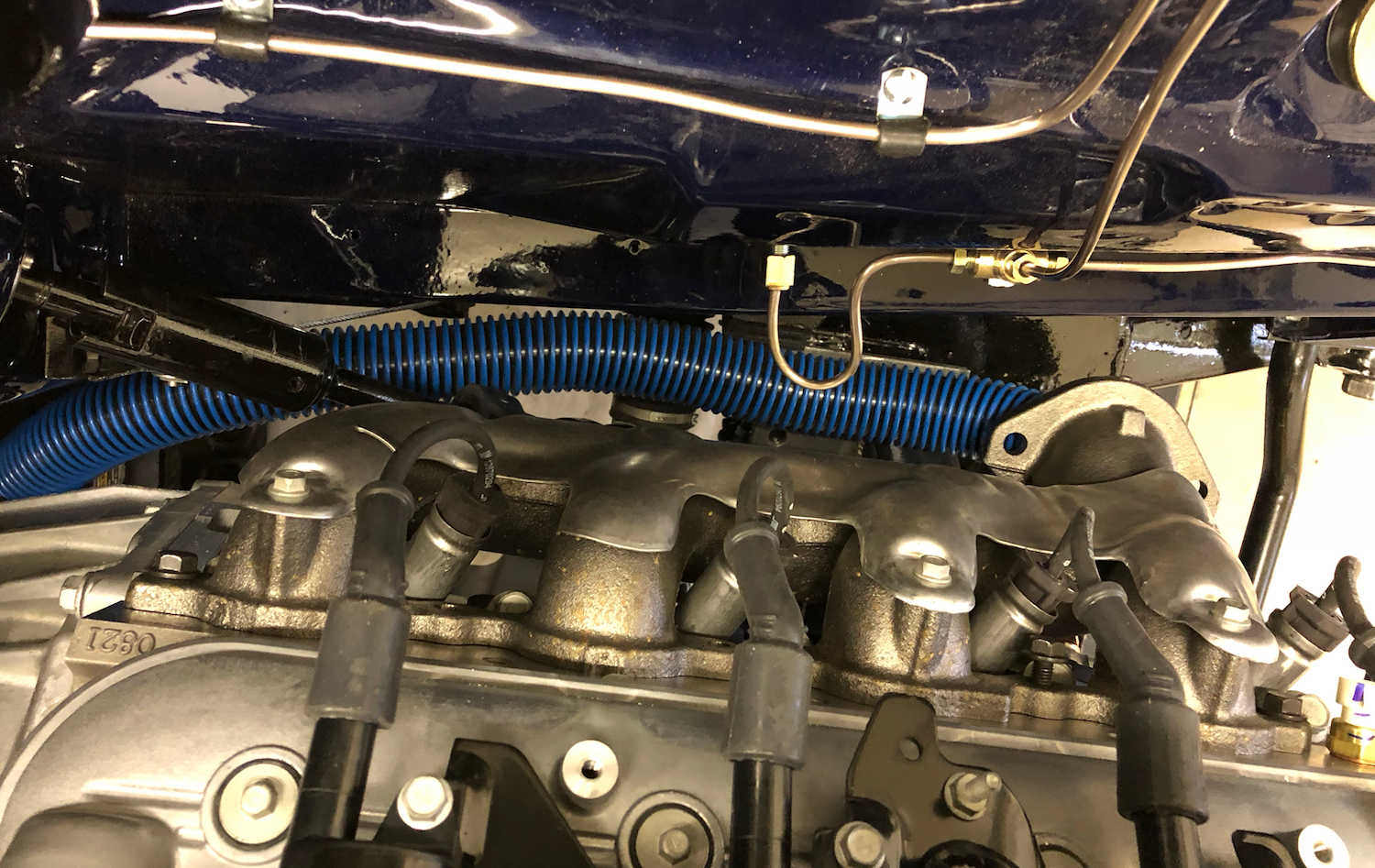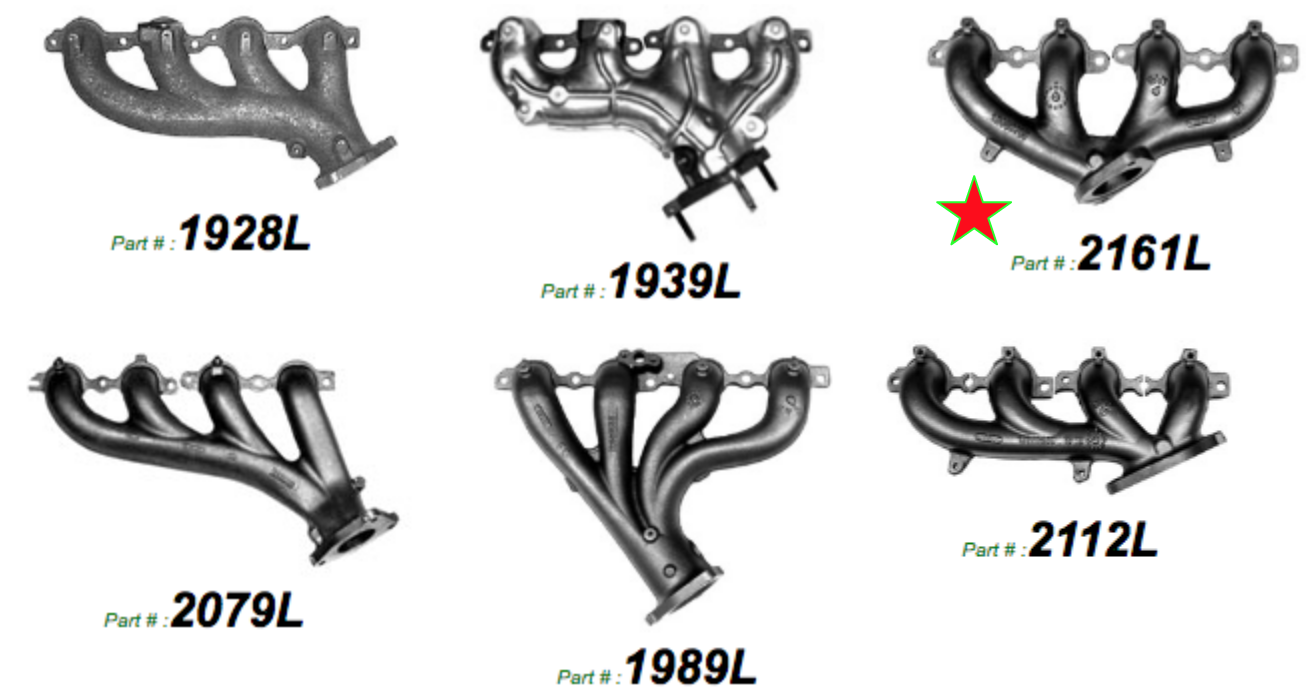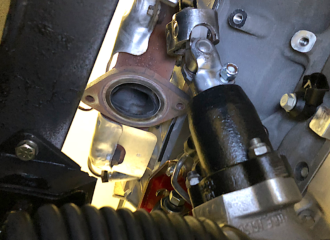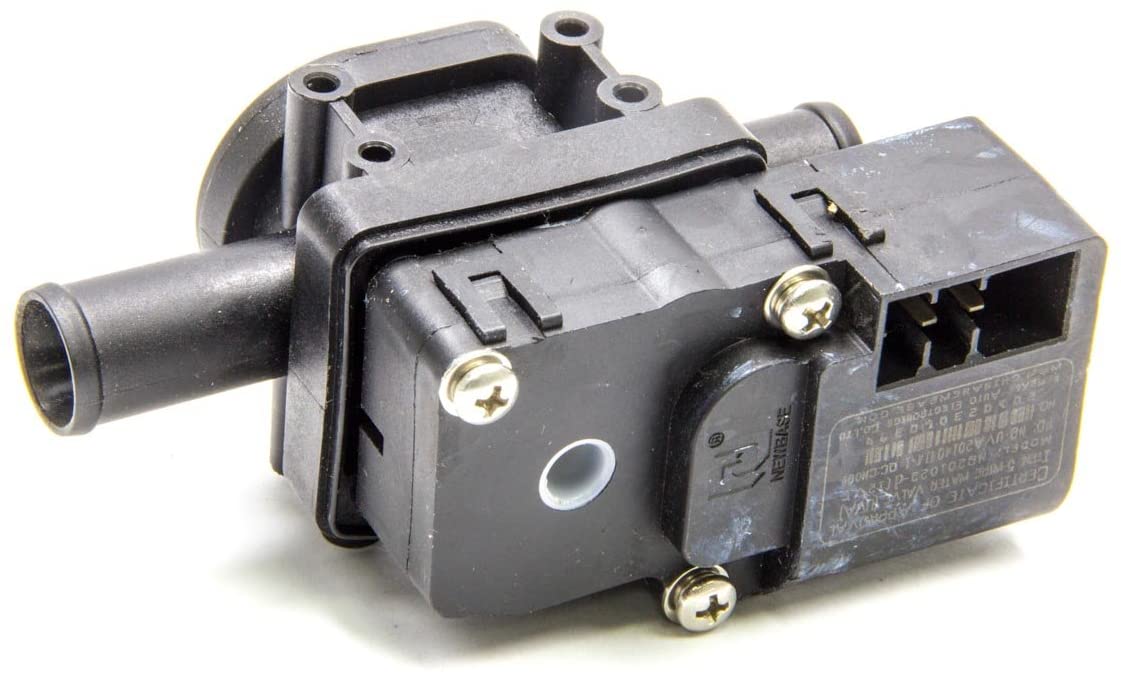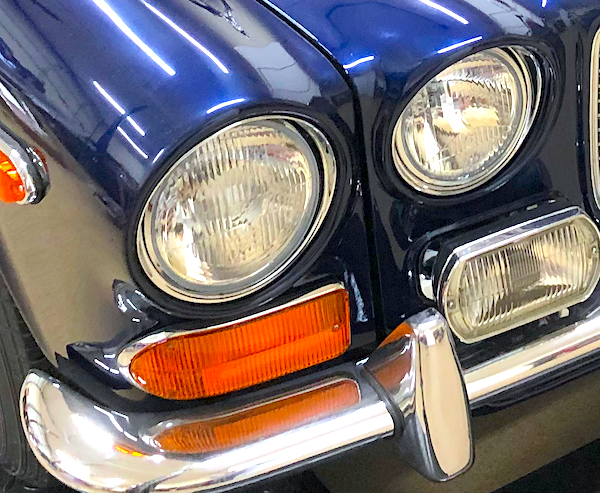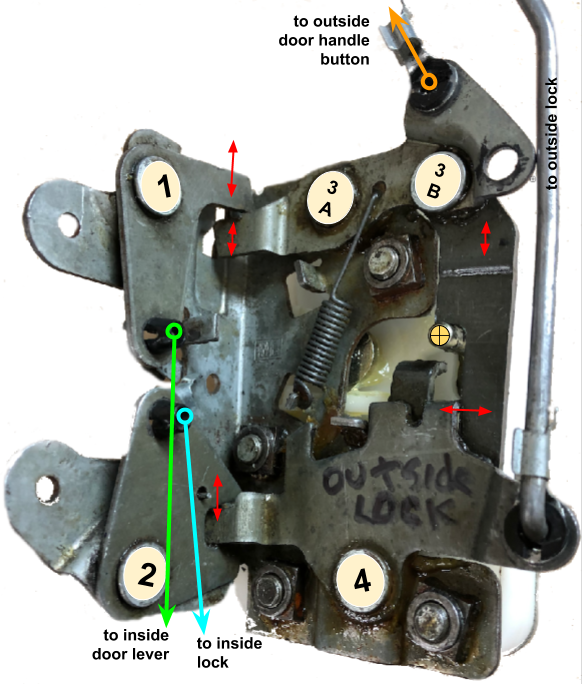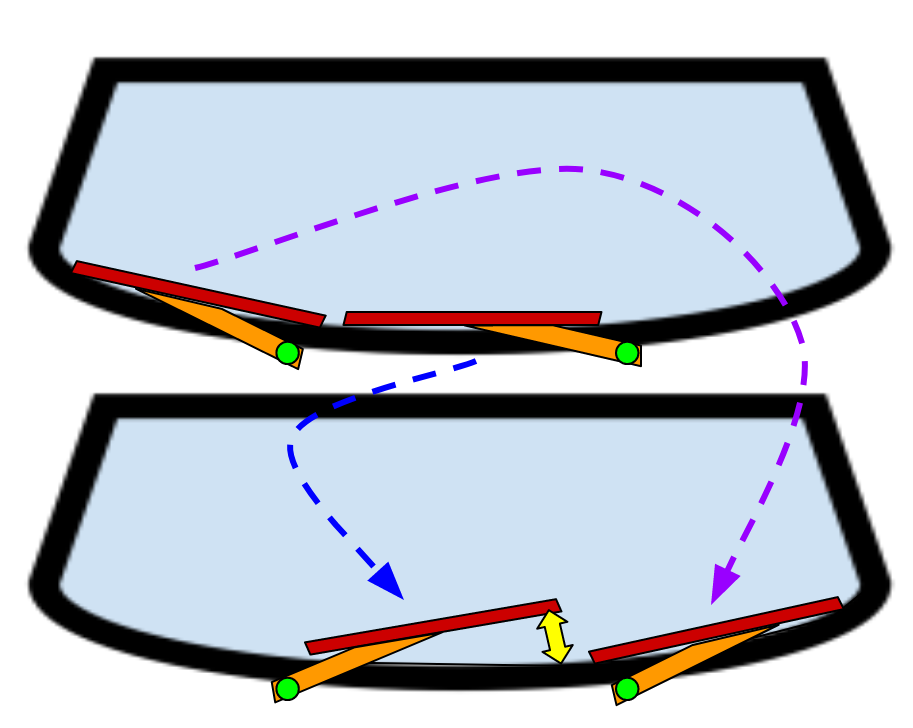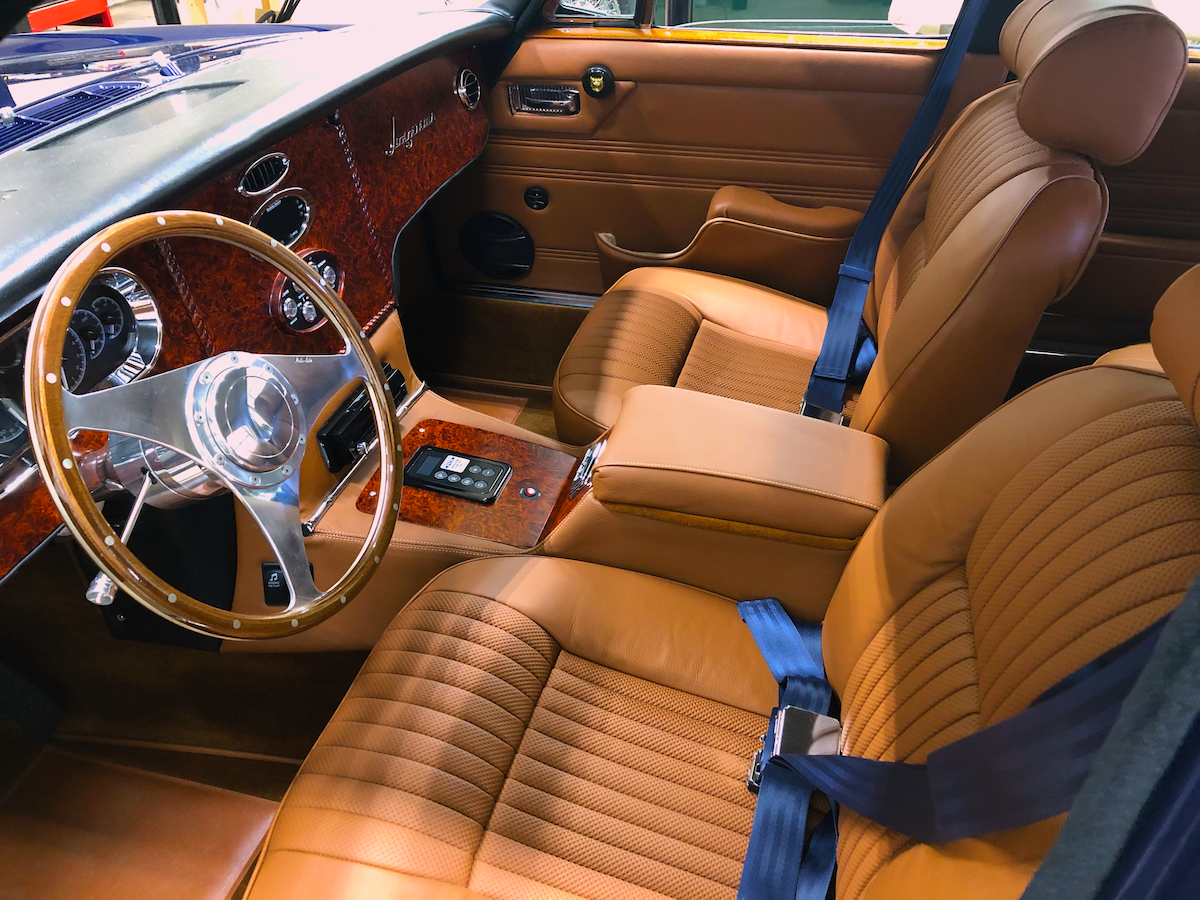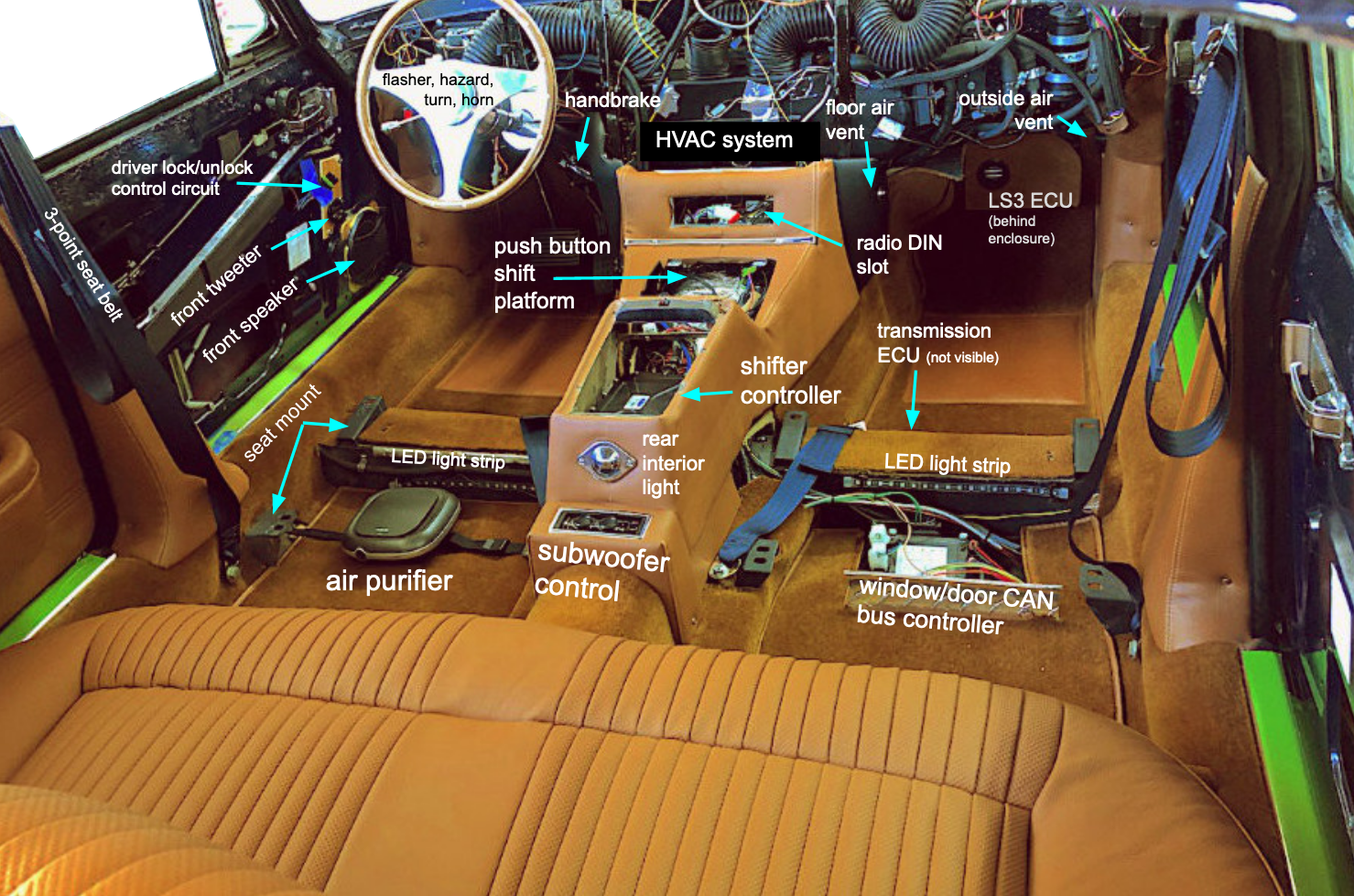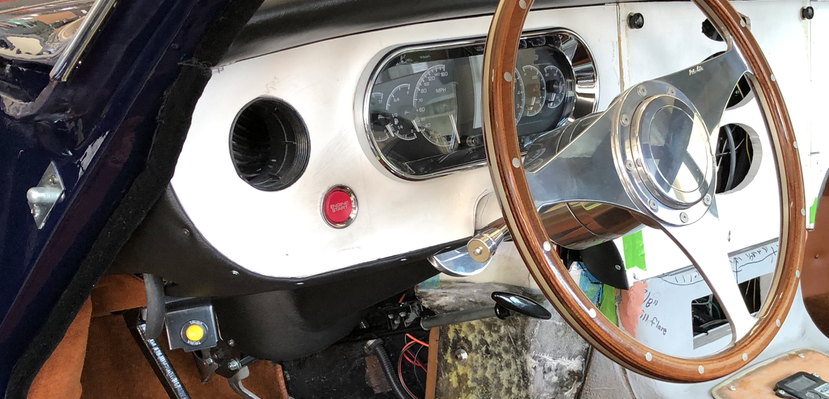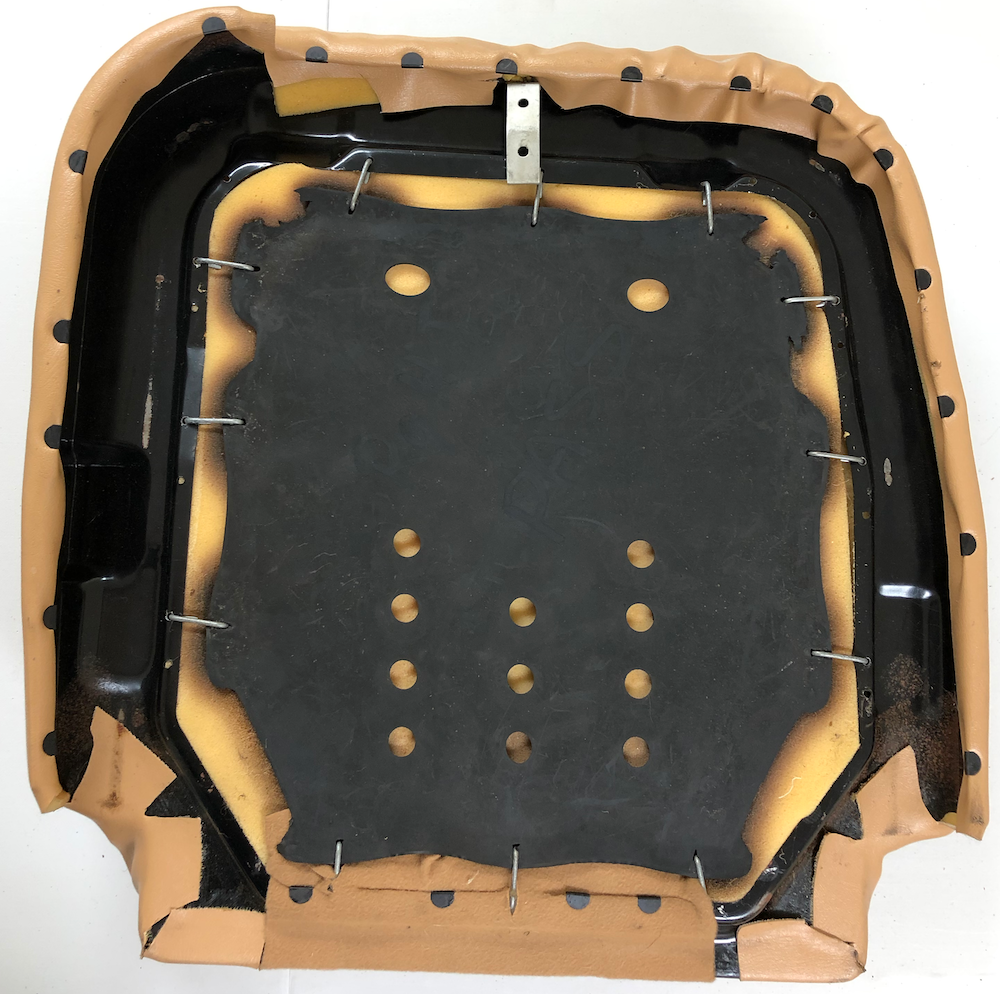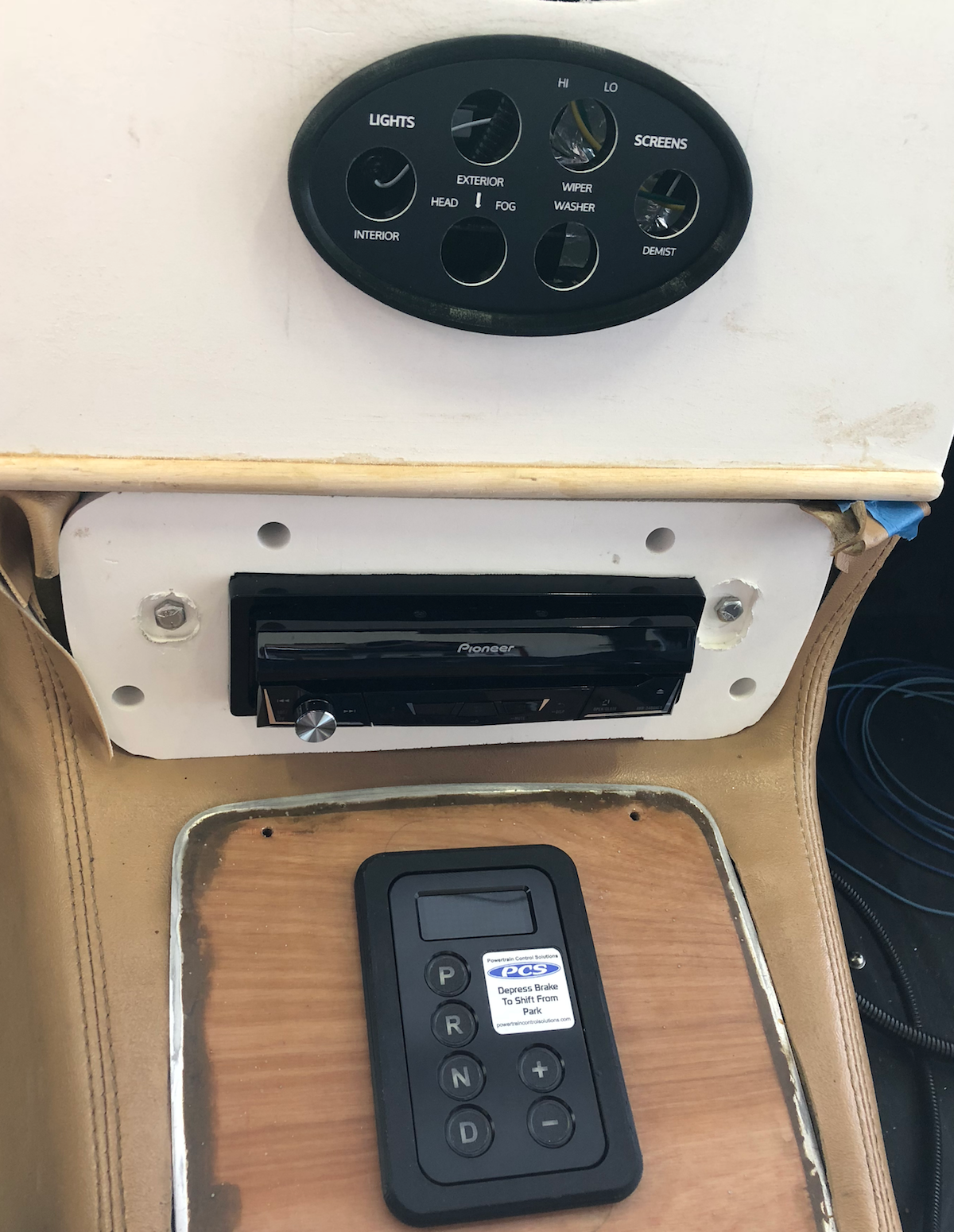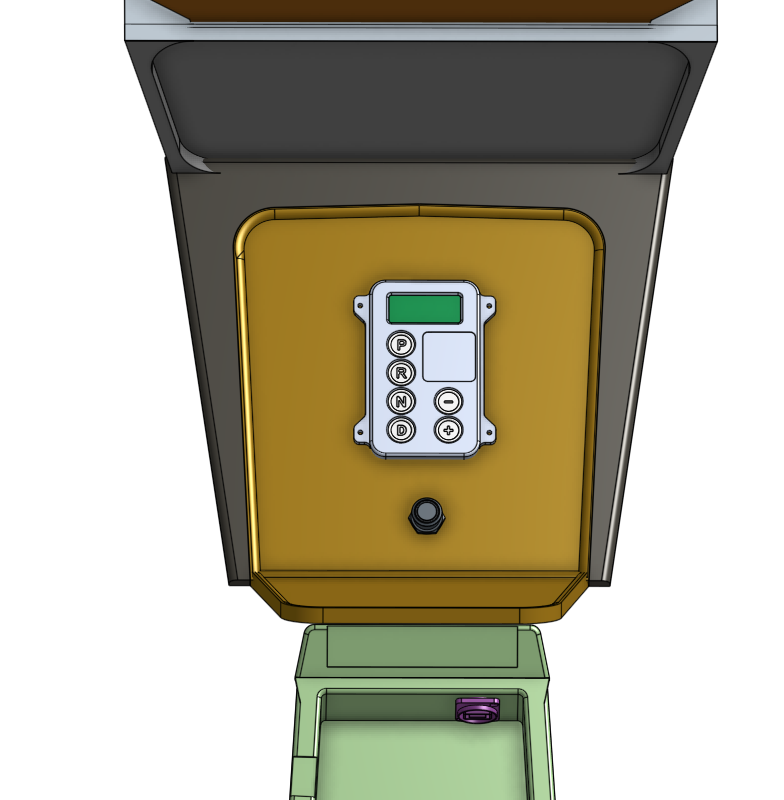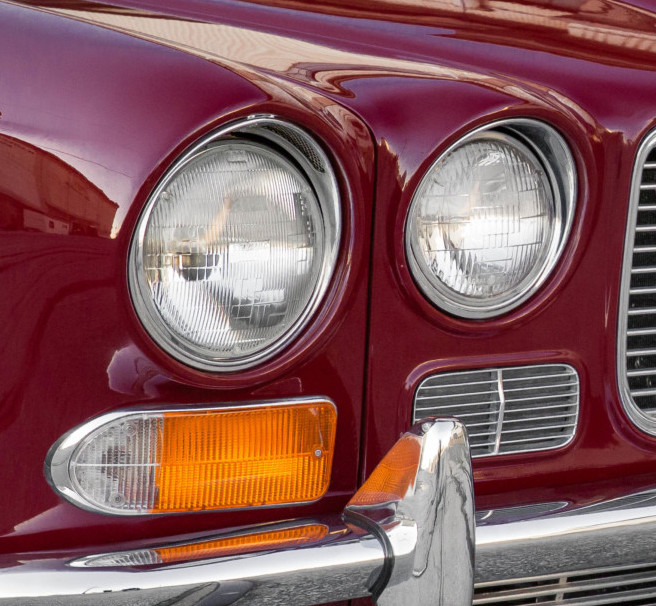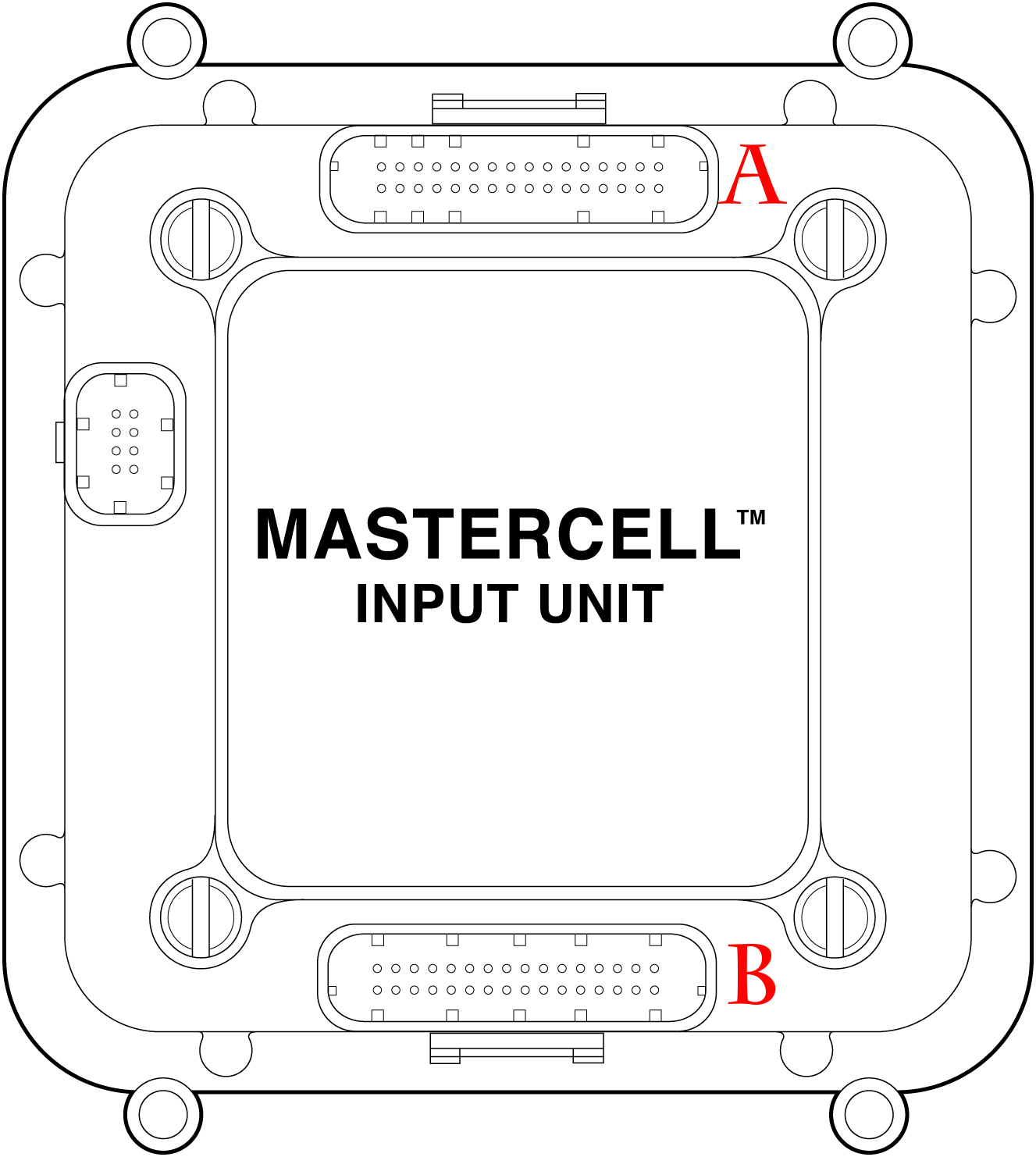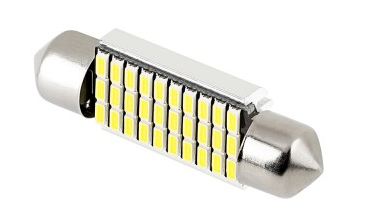Topics
Overview
One of the more complicated fitment issues concerns the LS3 exhaust manifold on the left side of the engine.
The right side is easy — there is plenty of room — since there is no steering column in the way. The left driver’s side has the protruding steering column, linkage to the steering rack line as well as line connections to navigate around.
The illustration above shows the left side of the engine bay looking straight down. The blue dashed lines represent the lower steering column (nearly horizontal) and the steering rack (vertical). The yellow numbers indicate the four exhaust ports on the left block face.
The LS3 crate engine ships with the stock 2010 Camaro SS manifold which has a rear dump design.
This does not fit at all since the lower flange hits the steering column (see left red circle in the second illustration and yellow arrow in the top photo).
Reversed manifold option
The left and right Camaro manifolds are mirror images of each other, so it is possible to reverse them! If swapped around, the stock becomes a front dump design and actually works pretty well at a first pass (green circle above). It clears all obstacles with enough room to run a pipe straight back along the engine bay rail, but the 90-degree bend required is very abrupt and will probably disrupt exhaust gas flow. Besides, it would look weird.
Exhaust manifolds vs headers
Manifolds are typically cast iron (which costs less than welded pipes) and are delivered with nearly all OEM vehicles and crate engines, including our Chevy LS3. Manifolds offer quieter operation (not a benefit to some!), and generally come in more compact form factors. The primary manifold disadvantage is flow restriction since each exhaust port doesn’t have it own dedicated outflow tube.
To really achieve significant horsepower improvement from a less restricted flow, so-called “long pipes” must be deployed with the blend point into the single (or dual) exhaust pipe deferred as much as possible. This hot rod or racing configuration simply isn’t practical in the XJ6 saloon, so our search must be limited to “shorty” headers.
Headers, even shorty designs, use more material than manifolds (and therefore cost significantly more) as they allocate more tube volume to each exhaust port. They also look better than the somewhat industrial cast manifolds. But in the LS3 the exhaust — whether manifold or header — can barely be seen anyway. So the choice really comes down to fitment.
Center dump designs
The only fit option remaining is a center dump design, either “block hugger” shorty headers that terminate very close to the block, or cast iron manifolds that drop straight down without “hugging” the block (the orange circles in illustration above). There are several aftermarket center dump shorty header possibilities as well as the option to design custom crafted headers.
But before pursuing center dump headers, it’s worth exhausting (pardon the pun) all the other stock GM manifolds that fit the LSx engine block.
In addition to the stock 2010-13 Corvette assembly that shipped with our LS3 engine, GM cast six different manifolds since the introduction of the LS1, but only two (1989 and 2161) have a center dump design. The 2161 manifold (marked with the star) uses a very compact footprint that may fit in the XJ6 engine bay.
2161 manifold
The 2161 manifold was introduced on the 2005 Corvette, and subsequently shipped with the 2006-07 Corvette 6.0L and the 2008-09 Corvette 6.2L engines.
Because it remained in production for five years, it’s not too difficult to find used ones in reasonably good condition (often exhaust shops salvage them from customers who convert over to headers).
Fitment options
Like the stock manifold that came with the LS3 crate engine, the 2161 manifold can be mounted in the normal way or swapped (sides reversed) so that the down flange points towards the front of the engine bay.
The normal mount still presents some challenges, especially a potential conflict with the lower steering column that is uncomfortably close to the flange.
Happily, the reverse mount does not conflict with the steering column or rack.
The only issue is a 90 degree bend from the flange required to clear the suspension crossmember and point the exhaust along side the transmission.
The following illustrations compare the normal and reverse mounts on the driver side.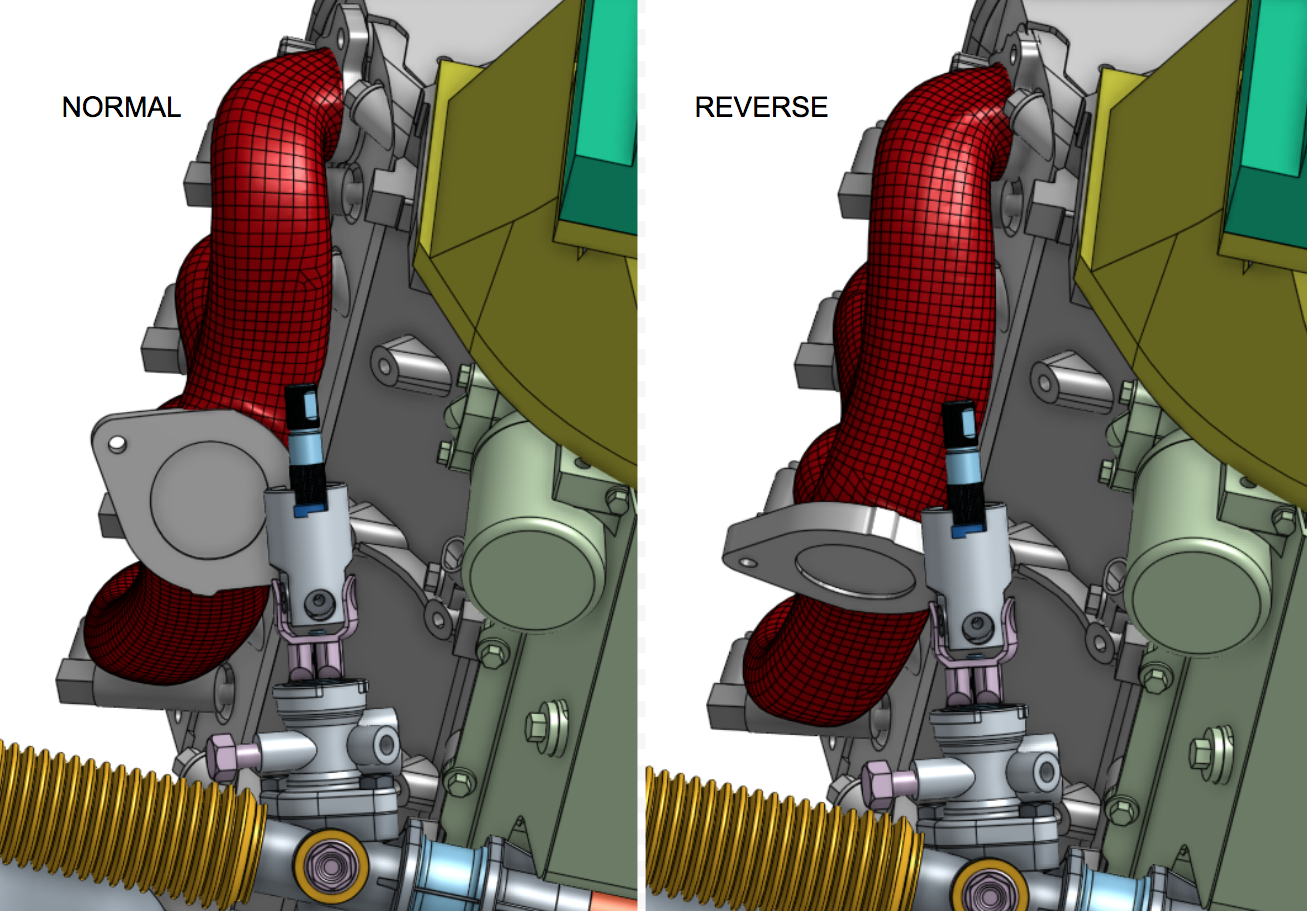
A possible exhaust routing with the reverse manifold mount would like something like this:
Mock up of the exhaust pipe at the manifold flange showing the 90 degree bend.



